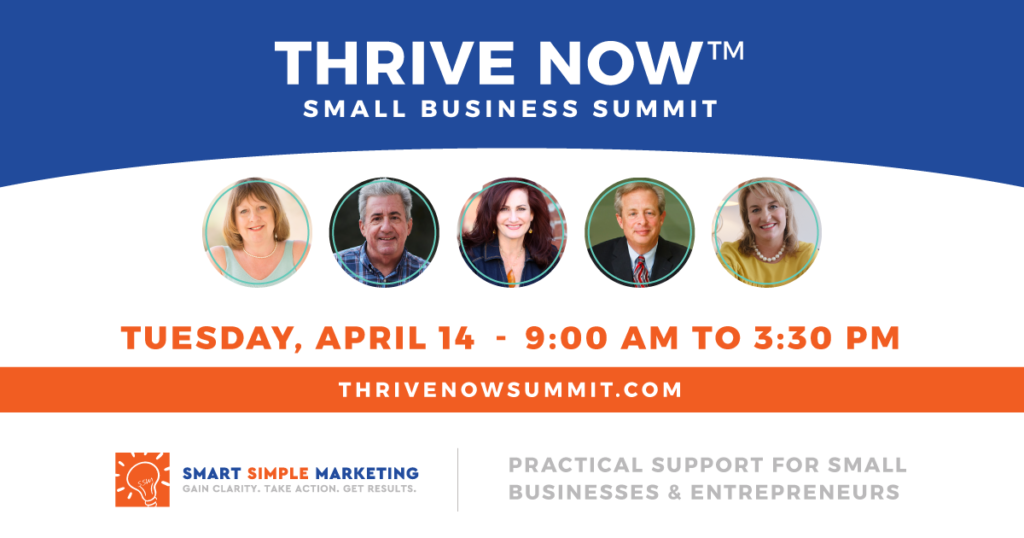During the last month or so, post coronavirus and the new social distancing, we have noted two trends among our clients, especially those who operate in technology and small business sectors.
First, we’ve seen organizations of all sizes doubling down on their marketing efforts. We learned from the 2008-09 recession how important it is not to shut down marketing and advertising. Rather, this is an opportune time to review our efforts, connect with our audiences, and look for ways to help and serve, which brings us to the second trend we’ve noticed.
The second trend we’ve noted is an uptick in virtual events and meetings. Since we’ve been a leader in producing and hosting virtual events since 2008, many of our clients, followers, and friends have been reaching out to us. They have been asking for advice on the best platforms, tools, people, and processes to help them produce virtual programs and conferences. We’ve created a detailed, step-by-step guide that will help you get started on producing virtual events, no matter what size your business may be or what product or service you sell.
What follows are four things that small businesses should be doing today to help recover from losses caused by COVID-19, and also to prepare themselves for the future, should something like this happen again.
Create Pitch-Perfect Messaging
Don’t be tone-deaf in your marketing messages – Acknowledge what your community is going through. It’s OK to continue to do business, but want to have an empathetic approach to your marketing and advertising messages. For example, in this video, I talk about receiving marketing messages from a travel company that said now was a great time to book travel to the Caribbean. Obviously that company had scheduled that message before the COVID-19 restrictions took place, but a savvy marketing team would have paused those automated messages and pivoted toward more helpful, empathetic messaging during this time. Which brings me to my next point …
Slow Down Your Selling and Ramp Up Your Helping
You run a for-profit company, and you have every right to earn income for your small business. After all, you’ve got stakeholders to support, and that includes employees if any, vendors, suppliers, customers, owners and your local community! But consider how your sales pitches might land on someone who’s really struggling with their own supply chains.
Rather than extending a hand and asking for something, try extending a virtual hand and asking your community how they are doing and how you can help.
Be empathetic and helpful – Now is not the time for the hard sales pitches. How can you help your customers and followers? Now is the time to be creative and think outside of the box! We have seen some of our favorite local restaurants offering takeout and deliveries, and our local wine shop is now offering curbside pickup!
Other businesses are waiving late payment fees, extending lines of credit, and offering discounts; while this may not be an option for your business, you might look for creative ways to keep customers engaged.
We have also seen businesses using the downtime to create more helpful information online, whether it’s about surviving coronavirus or to help their own customers and communities. For example, tech company Homebase created a page devoted to financial resources for businesses and employees. We’ve created “Thrive NOW,” a FREE virtual summit designed to help small businesses and entrepreneurs survive the COVID-19 health crisis.
Shift to Online Operations
SMBs can take a page from the playbooks of enterprise-level retailers like JOANN, Pet Smart, Target and others that offer online shopping with curbside pickup. How can you shift your sales and customer service efforts to an online channel? How can your employees use social channels, email, text messaging, WhatsApp and other virtual technologies to connect with your customers?
The following list shows three ways that local businesses are accommodating customers and clients while practicing social distancing. What can your organization learn from the gyms, grocers and beauty salons?
-
- Virtual meetups: Gyms have adopted virtual technology to continue to hold fitness classes using technology such as Zoom, Skype, GoToMeeting, Google Hangouts and other platforms like these.
-
- Online consultations: Beauty salons are offering online consultations and DIY kits that their clients can pick up or have delivered to do their own hair color and nails. Some are even offering in-home house calls, which are within most current social distancing guidelines; check with your state or local government’s COVID-19 resource page for the latest guidelines and rules.
- Adjusted access and hours: In addition to online shopping with curbside pickup options, grocers are setting aside shopping hours for seniors who are especially at risk, allowing only a few at a time to shop safely.
Stay tuned for some amazing tutorials, tips and recommendations
Disaster Recovery Plan: Prepare for Next Time
In a 2017 survey, Nationwide asked small businesses about their disaster recovery plans. Most SMBs — 68% — did not have a written disaster recovery plan even though 49% of them said their businesses would take at least three months to recover from a disaster and 22% said they’d already been impacted by such disasters.
What are the components of a disaster recovery plan? Good question! Here’s what we suggest:
-
- Identify risk vulnerability. First, assemble a disaster relief team within your organization. You might even involve some key stakeholders from your best customers and suppliers. Identify what types of disasters your organization is most likely to encounter. Talk about the COVID-19 crisis and ask yourselves what you’re learning from this health crisis. What is going well, and what could you and your team have done better? What financial, natural, and man-made disasters have impacted businesses in your industry or your geographic area in the last 10 to 20 years?
-
- Business interruption insurance. This type of business insurance comes in different forms, depending on where you are located. For example, businesses in some states might need coverage to protect against natural disasters like floods and hurricanes; however, we all need protection against global health crises! Talk to your insurance broker about this. How much do you need, and should you photograph and video your assets?
-
- Cloud-based computing. If you have to work remotely, make sure your most important files are online in the cloud. Transfer your documents to a secure online host. Not only will this protect your business in case of a fire or other physical disaster, but if your team has to work remotely, they will have access to important files. What tools will you use to store files online? You might consider Google Drive, Dropbox or Box. What cybersecurity measures will you put in place to ensure your files are protected from hackers? Who will have administrative, editorial and view-only permissions, and who will manage those permissions?
- Communications protocols. Your disaster recovery plan should specify processes, tools, and roles for communication within your organization, between your organization and its stakeholders, and between your organization and the communities you serve. Who will be your point person for questions and responses? How often will you communicate? What channels will you use?
We’ve learned so much in the last month about protecting small businesses and how one pandemic can slow down a global economy. The small business is the backbone of U.S. capitalism — we are responsible for ⅔ of net new jobs in the country, 44% of our GDP economy, and we pay more than 33% of private-sector payrolls, according to the Small Business Association and Small Business and Enterprise Council. We are happy to see so many organizations lending hands to help SMBs! We hope this momentum continues after COVID-19!
We are in this together, friends. Let’s continue to support each other and share resources. It’s never been a better time to innovate and look for new ways of doing business. If there is one thing we want SMBs to take from this article, it’s this: Now is the time to prepare for the future and look at how we can pivot and innovate.


